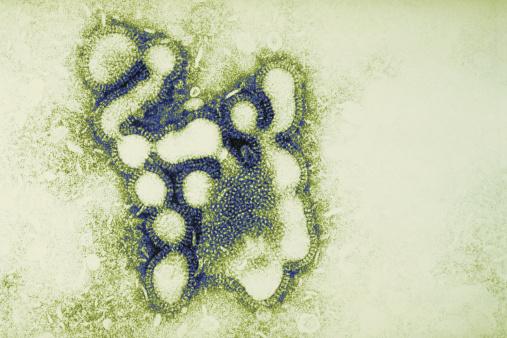The gradual fade of seasonal influenza in the United States was punctuated last week by a novel swine-origin flu case in Minnesota and reports of three more flu-related deaths in children, the Centers for Disease Control and Prevention (CDC) announced today.
The novel case involved a variant H1N2 (H1N2v) virus in a Minnesota patient who was hospitalized but has recovered, the agency said. Health officials are trying to determine the source of the infection and if there are any other related cases. No other details about the patient or case were given.
The CDC noted that flu viruses that circulate in swine are called swine influenza viruses when isolated from swine, but are dubbed variant influenza viruses when isolated from humans.
Three H1N2v cases were reported in Minnesota in 2013, all of them in people who were exposed to pigs at the Minnesota State Fair that year. The viruses were described as the first H1N2v isolates known to contain the matrix gene from the 2009 H1N1 pandemic virus. The CDC didn't say whether the latest Minnesota H1N2v carried the 2009 H1N1 matrix gene.
A few other H1N2v cases were reported in earlier years, including one in Minnesota in 2011 and one in Michigan in 2007.
Flu decline still slow
Otherwise, the seasonal flu epidemic continued its very slow exit last week, according to the CDC.
The three flu-related deaths in children reported last week compared with 4 a week earlier and raised the season total to 67. Two of the deaths involved 2009 H1N1 infections and occurred in early March and early April; the other death dated back to December and involved an influenza A virus that was not subtyped.
Influenza-like illnesses (ILI) accounted for 1.8% of visits to sentinel clinics last week, the same percentage as the previous week, the CDC said. That level is below the national baseline of 2.1%.
Flu cases were geographically widespread in just three states (Connecticut, Delaware, and New York) and Puerto Rico, down from seven states and Puerto Rico the week before. New Jersey reported high ILI activity last week, though no states had done so the previous week. Moderate ILI activity was reported only by Puerto Rico, whereas two states had joined Puerto Rico in that category a week earlier.
Regarding overall flu-related deaths, 6.7% of deaths in the 122 Cities Mortality Reporting system were attributed to pneumonia and flu, slightly lower than the 6.8% the previous week and the epidemic threshold for the week, also 6.8%.
Steady drop in positive samples
One flu marker that has declined steadily is the share of respiratory samples testing positive for the virus. Last week 8.2% of 11,153 samples were positive, compared with 11.2% of 12,818 the week before. Of isolates that were typed, 62.9% were influenza B, a sliver higher than the previous week's 61.9%.
The season-long incidence of flu-related hospitalizations reached 31.0 cases per 100,000 population last week, up from 30.6 the week before. The rate was highest in elderly people, at 88.4 per 100,000.
See also:
May 13 CDC FluView update
Sep 7, 2012, CIDRAP News story about H1N2v cases in Minnesota






















